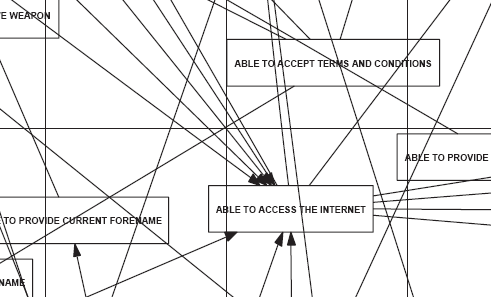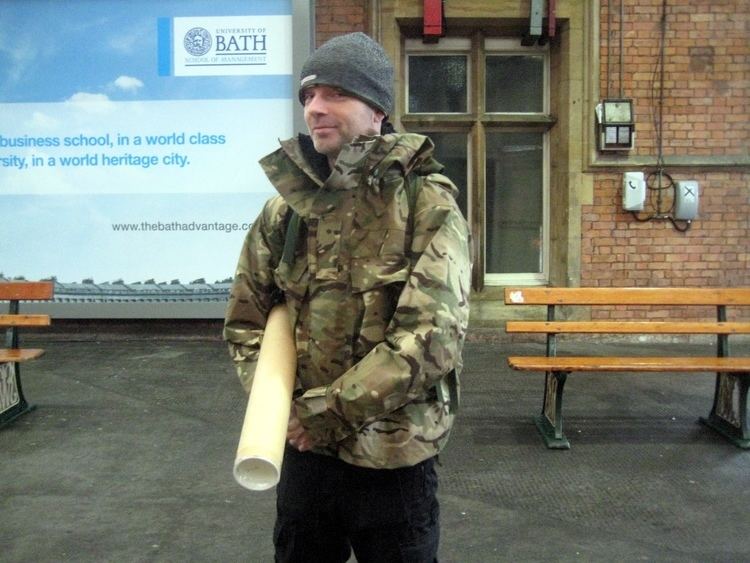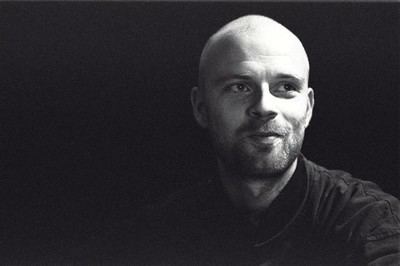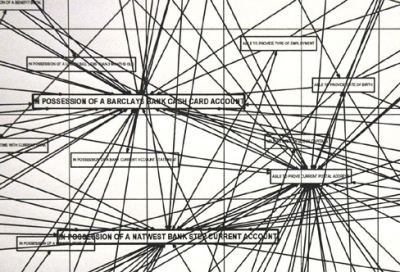Citizenship United Kingdom Role Artist Name Heath Bunting | Years active 1980s-present Occupation Artist | |
 | ||
Style | ||
Heath bunting artist talk july 11 2014
Heath Bunting is a contemporary British artist born in 1966. Based in Bristol, he is the founder of the site irational.org (with Daniel García Andújar, Rachel Baker and Minerva Cuevas) and was one of the early practitioners in the 1990s of Net.art. Bunting's work is based on creating open and democratic systems by modifying communications technologies and social systems. His work often explores the porosity of borders, both in physical space and online. In 1997, his online work Visitors Guide to London was included in the 10th documenta exhibition in Kassel. An activist, he created a dummy site for the European Lab for Network Collision (CERN) and works to maintain a list of pirate radio stations in London.
Contents
- Heath bunting artist talk july 11 2014
- Heath bunting identity bureau an introduction
- Own Be Owned or Remain Invisible
- Appropriation
- Ownership
- Visibility
- Kings Cross Phone In
- BorderXing
- References

Heath bunting identity bureau an introduction
Own, Be Owned, or Remain Invisible

Created in 1998, _readme.html (Own, Be Owned or Remain Invisible) is a work of net.art that spoke to the time period in which it was created, and yet still remains relevant to the contemporary moment. The piece is a simple web page with a white background and light grey text taken from an article about Heath Bunting. A vast majority of the words are hypertext, but not all. As coded for by simple HTML attributes, hyperlinked words turn from grey to black once visited.
Appropriation

In Own, Be Owned or Remain Invisible Bunting makes use of appropriation. The work utilises an article about Heath Bunting written by James Flint of The Telegraph. Instead of presenting the article in its traditional form, Bunting links nearly every word to [insert word].com and alters the color-scheme of the document as per his white-on-white period.
Ownership

Own, Be Owned or Remain Invisible addresses the commercialisation of the Internet. By clicking one of the hyperlinked words, the reader is transported to the domain, which may or may not be owned. At the time of this work's creation, 1998, many of the domain names were not owned, but are registered today. In contrast, some domain may have been owned in the past twelve years, but are no longer owned any more, thereby touching on the transience of Internet ownership. Bunting's work also shows the range of banal or absurd domain names that companies have purchased. Not all words in the article are hyperlinked, however. Bunting effectively takes ownership of the following words by leaving them as normal text:
Through these words he spells out how the article touches on his own identity.
Visibility
In an 1997 interview, Bunting was quoted as saying the issue with the internet at the time was visibility vs. invisibility. This topic is addressed in _readme.html through the work's color scheme and use of hypertext. Before clicking on a hyperlinked word, the text of the article all appears light grey. However, clicking on a link changes that word's color to black. Additionally, all subsequent occurrences of the word turn to black, thereby making the domain much more visible on the page. Visibility is a relevant issue in current internet culture with concerns over what is public vs. private on the internet, SEM marketing tactics and search engine sophistication. If all links in _readme.html (Own, Be Owned or Remain Invisible) are clicked, the only words that are left as light grey are those describing the identity of Heath Bunting, suggesting that he, himself, chooses to "remain invisible."
King's Cross Phone-In
Communications and networking took center stage in Heath Bunting's 1994 performative art project entitled "King’s Cross Phone-In." On Friday, 5 August 1994, Bunting orchestrated a scheme that involved many people calling public phones in and in the surrounding area of London King's Cross railway station. [5] On his then-website Cybercafe.org, founded in 1992, Bunting posted the phone numbers to all of the public phones and encouraged his followers to do one of the following: call in a pattern, call at a certain time, call and speak to a stranger, or show up and pick up the telephone. [6] Bunting used his website as an informative source to let his readers know how to partake in his project.
When 5 August arrived, Bunting went to King’s Cross to pick up telephone calls. Many people called in and he witnessed as casual passers-by engaged in conversations with strangers who were perhaps halfway across the world. The project brought people together, if only for a few brief moments, to create a network through the communication medium of telephones. In Digital Humanities, a class by Professor Michael Shanks at Stanford University, the project is described: “the train station was transformed into an art platform and the unsuspecting commuters and workers in the area became the audience.” [7] After the phone-in art was completed, Bunting reported back to his followers about the experience on his website and encouraged others to do the same. [8] All of these are still available at Irational.org.
This is an early example of a flash mob and instigating action through a then-passive medium. Bunting's work has been compared to the work of Allan Kaprow, one of the pioneers in performance art.
BorderXing
Commissioned by the TATE of Britain and the Luxembourg-based Fondation Musée d'Art Moderne Grand-Duc Jean (MUDAM) in 2002, Borderxing details ways to cross international borders throughout Europe without legal documentation. It provides video, photography, maps, and necessary materials on the project website. It demonstrate how to succeed without being located by dogs, and when not to run to avoid being shot. There is even a supplemental botanical guide so you can avoid poisonous plants.
Bunting reveals that restriction of movement set in place by governments and bureaucracies. The project shows not only the restriction of physical borders, but the concept that the internet is not a borderless space. Bunting limits access to the project. You must be at a designated location to access the site or apply to be an authorized client.
